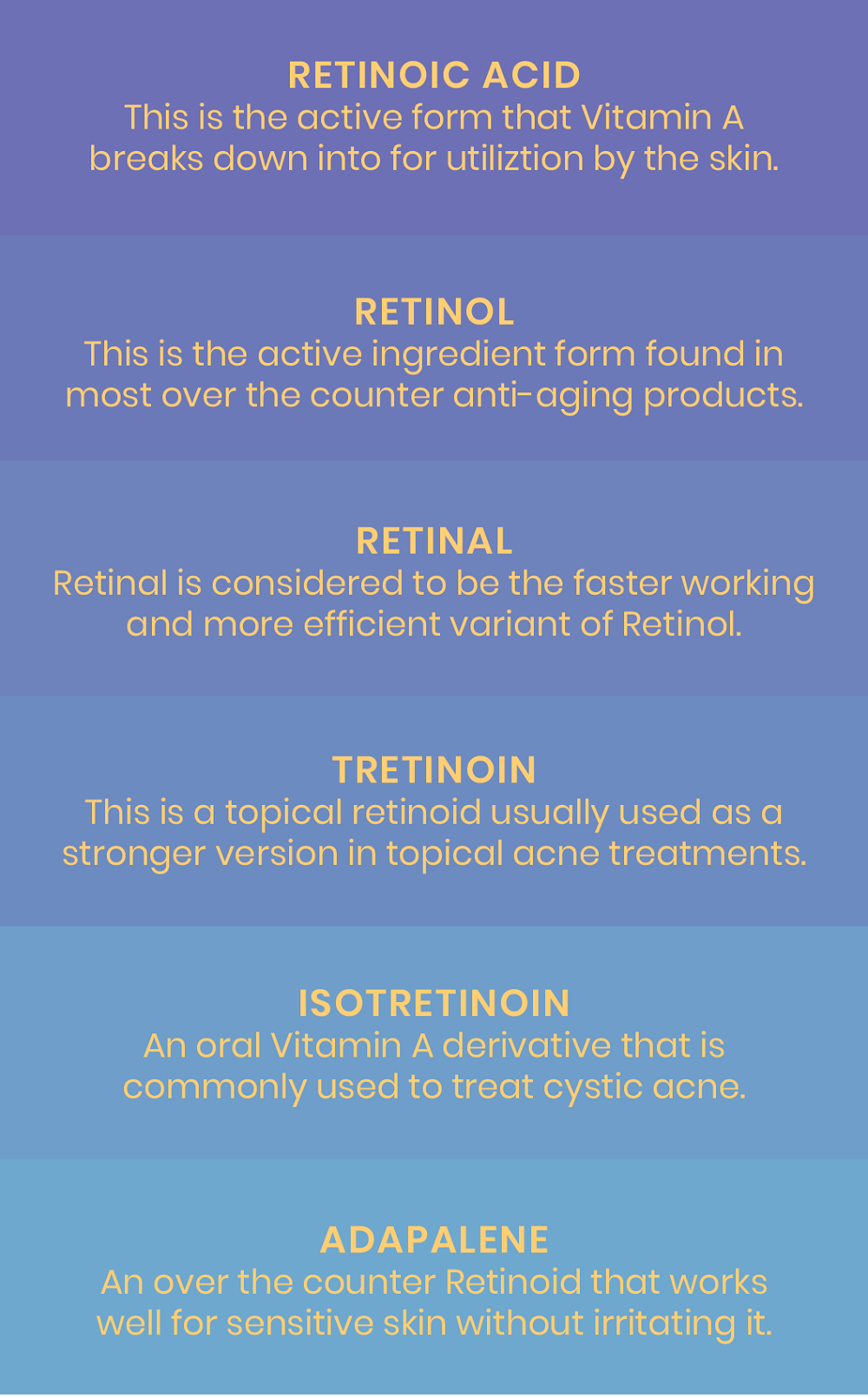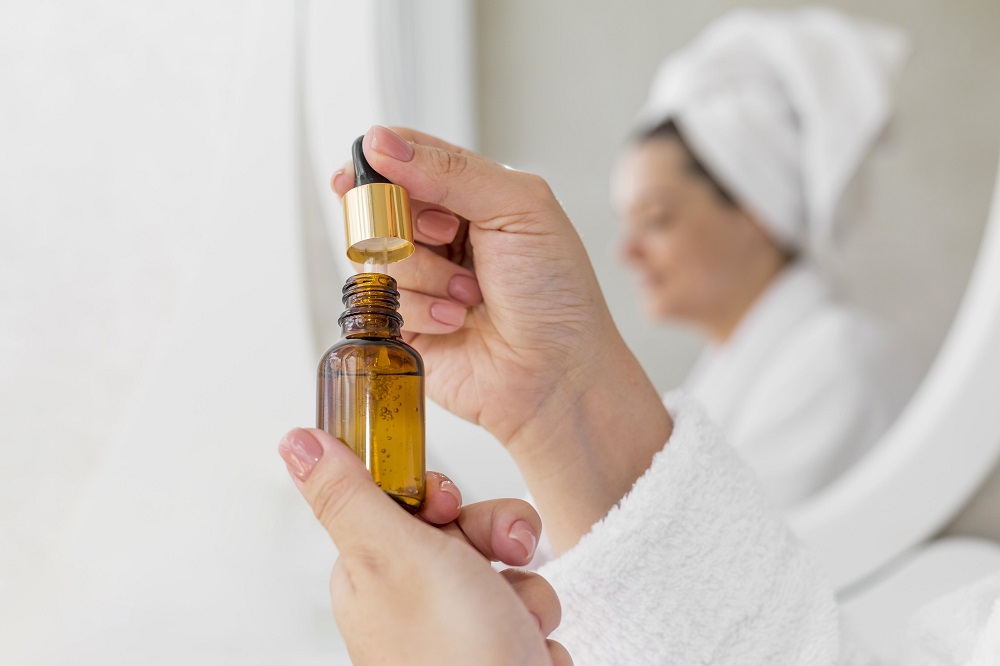Retinol is an active ingredient that has taken the skincare industry by storm in the past few years. Have you ever wondered if it's actually worth the hype? Let’s see what are the benefits of Retinol and whether you should include it in your skin care regimen.
Retinol is basically a Vitamin A1 - alcohol which is known to boost the amount of collagen and elastin in your body. It unveils radiant and healthy skin by increasing the rate of skin cell turnover which removes the layer of dead cells in the topmost layer of your skin thereby minimising the appearance of fine lines and wrinkles. It actively works on the skin to prevent skin-ageing and to improve skin tone and texture. Retinol also helps in treating blackheads, whiteheads, acne and clogged pores by reducing excess oil secretion and removing dead cell buildup. It comes in a variety of face creams and under eye creams.
The image below lists out the types of Retinoids available as over-the-counter, topical, and oral treatments. These vary in their level of concentration and purposes, so definitely make sure whichever one you go for suits your needs!

Things to bear in mind before you start using Retinol based Treatments:
-
Retinol should be used only after consultation with a dermatologist because it can be harsh and cause severe reactions on the skin for some people.
-
Retinol should be used at night followed by a sunscreen in the morning since retinol can make your skin more sensitive to the sun and cause redness or inflammation due to sun exposure.
Application and Visible Results:
As a foreword, as stated earlier, we recommend you to visit a dermatologist if you are considering using Retinol, or products that contain Retinol. The following are important points to keep in mind:
-
Retinol is usually introduced slowly and in minimal amounts and the dosage is then increased upon the direction of a dermatologist depending upon how your skin is reacting to it. The dermatologist will also be able to guide you regarding the percentage of retinol that would be best for you to begin with based on your skin type and concern.
-
Retinol should be applied only at night as mentioned above, in a pea size amount on a clean and dry face, avoiding the eye area.
-
While using Retinol, omit the usage of other exfoliators like AHA, BHA, etc.
-
It is usually recommended to use Retinol for three months at a stretch followed by a three month break, as because cell turnover is no longer increased after three months.
-
Since everybody’s skin is different, Retinol’s average time to show results can’t be estimated with certainty . Most people start seeing results within the first 6 weeks and others in 12 weeks.
Side effects of Retinol:
Retinol does not suit everybody’s skin, especially sensitive skin. People suffering from skin issues like psoriasis, eczema, fungal infection, etc. should refrain from using Retinol, as it will be too harsh for their skin.
Other side effects include dryness, flakiness, inflammation, red and irritated skin. However, these side effects last for only a couple of weeks and can be treated by consulting a dermatologist.
So, now you know why Retinol has gained sudden popularity, along with the precautions to take and its side effects. We always say this, and we’ll say it again - always make sure to have complete knowledge and consult a doctor before trying anything radically new on your skin. No matter how popular a product is, even if it works for all your friends, it may not work for you. Also make sure to always do a patch test to be certain about how your skin reacts to a particular product.

